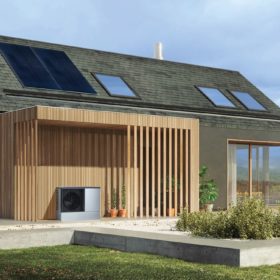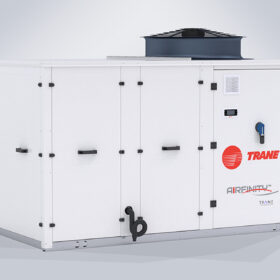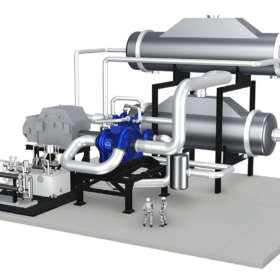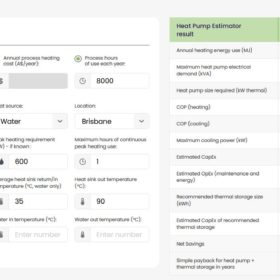Field data on heat pump efficiency, cold climate performance
Energy Systems Catapult has released interim data from air-source heat pump field monitoring in the United Kingdom between November 2020 and August 2022. Figures show that heat pumps are three times more efficient than gas boilers and that their median coefficient of performance (COP) on cold days is 2.44, compared to 2.80 year round.
German manufacturer opens heat pump factory in Slovakia
Vaillant has revealed that it has opened a new heat pump factory in Slovakia. The facility will exclusively make heat pumps from May, with an expected annual output of 300,000 units.
New propane heat pump for space, water heating
Italy-based Rhoss has developed a cascaded air-source heat pump that uses propane (R290) as the refrigerant. It can produce between 47.4 kW and 190.5 kW of heat and domestic hot water to a temperature of up to 75 C.
Irish provider showcases air-to-air heat pump for commercial applications
Trane has released a rooftop air-to-air heat pump that can produce between 14.5 kW and 37.4 kW of heat and between 16.5 kW and 38.4 kW of cooling. The new device can purportedly be adapted to cold-climate applications by adding complementary heating sources such as electric heaters or hot water coils.
Renewables-powered heat pump for district heating
South Korean researchers have developed a heat trading system including a ground-source heat pump, solar thermal collectors, a fuel-cell system, and two heat storage tanks for district heating at hours of peak solar production.
Renewables-powered steam heat pump for industrial applications
MAN Energy Solutions is building an industrial-scale heat pump that generates steam without using gas. It will produce steam to dry dairy ingredients at a milk farm in New Zealand.
Study shows payback times for heat pumps could plunge by 2030
McKinsey & Company says in a new report that payback periods for heat pumps could fall by up to 38% by 2030.
Seawater heat pump pilot project in Croatian shipyard
Croatia’s Viktor Lenac Shipyard aims to replace electric boilers and a water-to-water heat pump with a seawater heat pump, in order to provide heat and cooling for buildings. The pilot project is backed by EU funding and has launched a tender to support the construction of the seawater heat pump.
Solar-thermal heat pump configurations for buildings
Italian researchers have reviewed different system configurations for photovoltaic-thermal solar-assisted heat pumps in buildings. They say that using the PV-thermal collector as the heat pump’s evaporator results in the highest heat recovery, but a dual-source system with a separate heat exchanger is the most promising solution to cover all thermal needs.
Online estimation tool for heat pump sizing
The Australian Alliance for Energy Productivity (A2EP) has released a free, online estimation tool to aid Australian businesses in sizing heat pumps to replace gas boilers. The tool estimates the capex, opex, net savings, and payback time based on inputs about heating, cooling, location, and temperature requirements.









